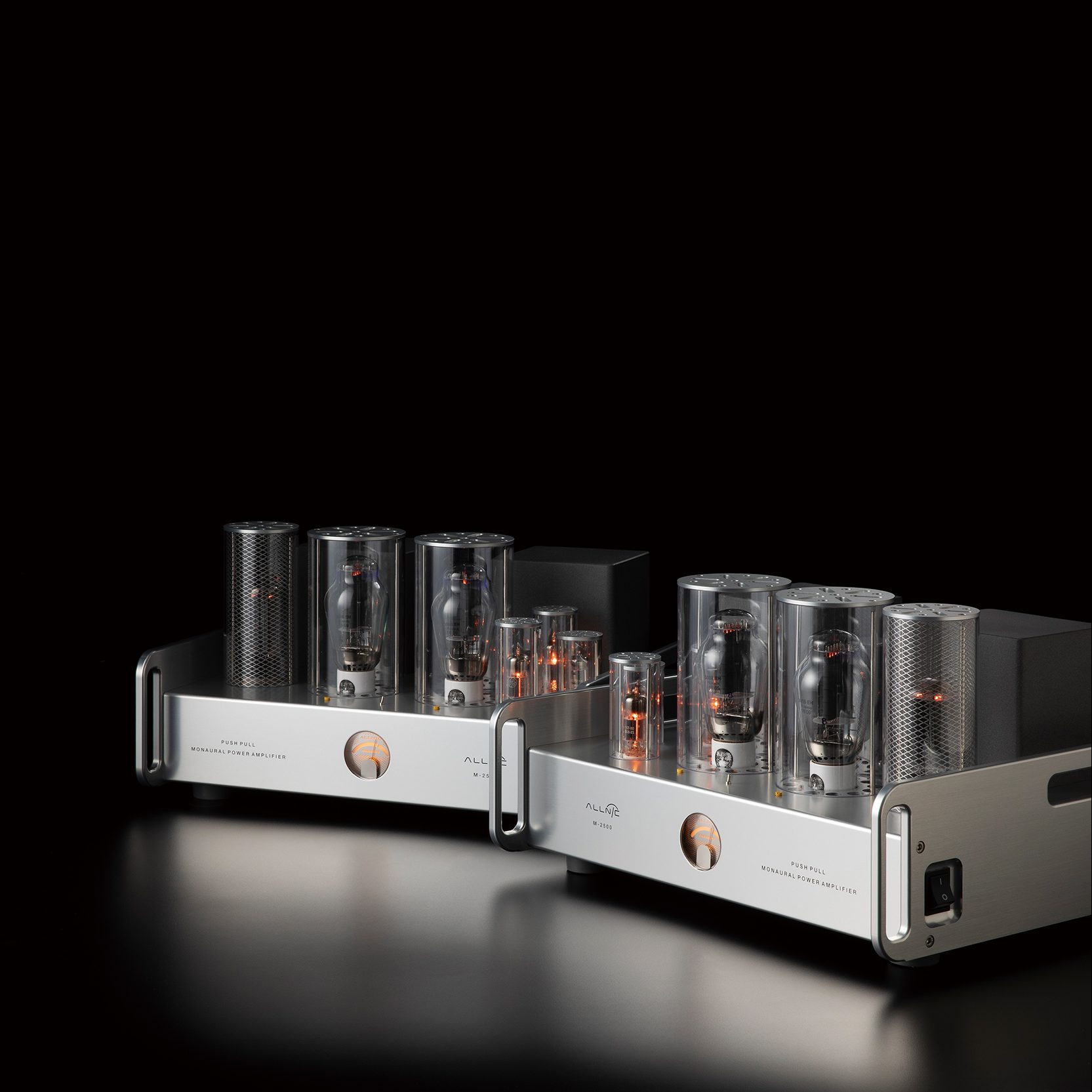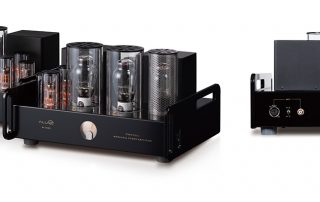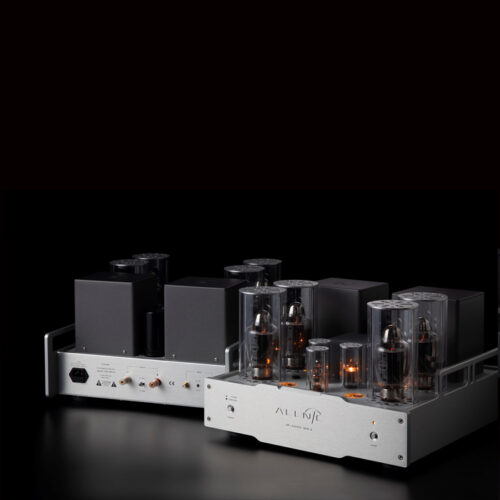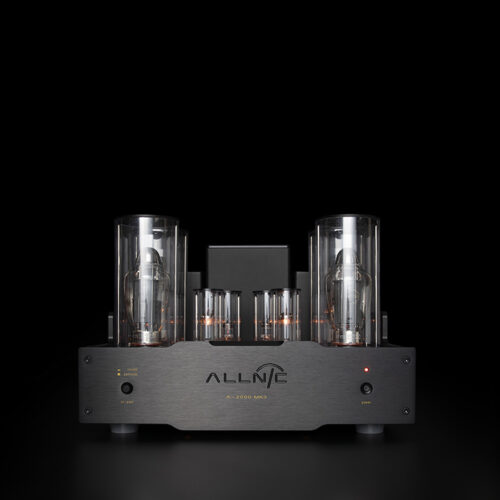The M-2500s use the superbly musical PX25, 300B or KT150 (customer’s choice on ordering) power tubes in push-pull configuration to provide the power that push-pull application facilitates but retaining the special musicality of the PX25/300B/KT150 tubes.
The M-2500s have the following features:
• The M-2500s are push-pull monoblock power amplifiers. They provide continuous power as follows: o PX25: 20W Triode o 300B: 30W Triode o KT150: 100W Pentode
• Powerful Driving Circuitry. Allnic believes in the importance of using high-quality, low noise and powerful driving circuitry in all its amplifying devices. Off-the-shelf design is not a part of the magic of these amplifiers. Tubes and transformer characteristics are closely matched to complement each other to achieve the most accurate and satisfying sound. In the M-2500s using 300Bs, we employ the 6485 pentode tube in triode mode as the input tube. Using the 6485 in triode is extremely beneficial as it improves the high frequencies, helping to maintain the characteristic sound of the 300B power triode. The 300B version also uses a pair of 12A4 tubes as the second stage driver tubes. In the PX25 and KT150 versions, the exceptionally accurate and stable 5654 is used as the first stage, and a pair of 6S4 tubes for the second stage drivers. The listener can easily hear and even “feel” the differences between these designs and other, more conventional ones. Please imagine, as you listen to the M-2500s, its sound compared to the sound of an amplifier using conventional, for example, 6SN7, 6922, 12AU7 or 12BH7s.
• Direct-heated Vacuum Tube Rectification. The M-2500s use a direct-heated 5U4G full-wave rectifier tube rather than a semiconductor diode in the rectification circuit. This provides both sonic benefits and improved protection for the PX25/300B/KT150 power triode tubes.
• “Full Engagement” Output Transformers. Conventional output transformers use pre-set secondary windings to accommodate 4, 8 and 16 ohm loudspeaker loads. However, these conventional transformers utilize only one secondary winding at a time, while the other secondary windings remain “idle”. This approach has two adverse effects. First, the output transformers are not working at their maximum efficiency, reducing their output relative to their potential. Second, the “idle” windings are not actually “idle”; they are subject to parasitic oscillations, producing their own “signal”. This undesirable electrical information is additive to the transformer’s output, distorting the amplified signal going to the loudspeaker. Allnic’s “Full Engagement” transformers address these issues by having 4 independent, secondary windings that are always fully connected, never “idled”. This means that all secondary windings are always connected 5 to your loudspeakers, regardless of which output switch position you use (4 ohms or 8 ohms or 8 ohms or 16 ohms, depending on the factory configuration you have selected). The result is that there is neither a loss of transformer output efficiency, nor the introduction into the output signal of distortion from parasitic oscillations of the secondary windings.
• Large Nickel/FeSi Core Output Transformers. As with our other models, Allnic uses very large output transformers (114 mm) with nickel, mixed with FeSi, cores. This provides for higher inductance with fewer windings than other designs can provide and results in the great benefit of an extremely wide range of output frequencies.
• “Soft-start” Circuitry. Allnic uses soft start circuitry that, after sufficient warm-up only, provides the high voltage supply to the plate of each tube. This protective design results in prolonged tube life and fewer and less frequent issues with tube performance.
• Analogue Power Tube Current Monitors. In order to provide constant current (bias) monitoring for the power tubes, Allnic uses an analogue current meter that is switchable to provide extremely accurate monitoring of each PX25/300B/KT150 tubes. The meters make it exceptionally easy to see the status of each tube at any time and to respond immediately to any variation in bias by use of the bias control knob for the relevant tube. The meters offer a simple, unambiguous indication of each tube’s status compared to conventional LED bias monitors.














상품평
아직 상품평이 없습니다.